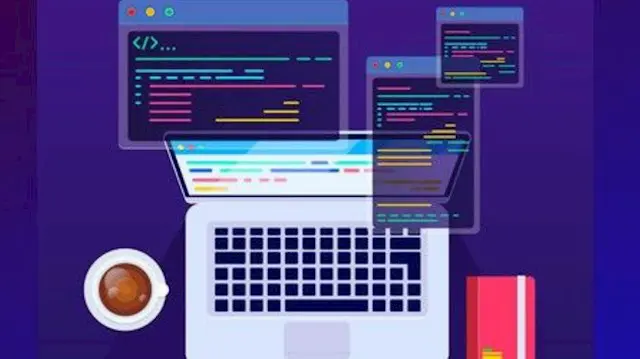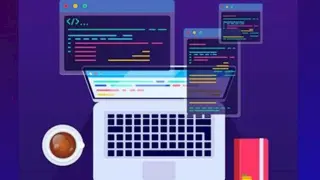
JSP (Java Server Pages)
Self-paced videos, Lifetime access, Study material, Certification prep, Technical support, Course Completion Certificate
Uplatz
Summary
- Certificate of completion - Free
- Reed courses certificate of completion - Free
Add to basket or enquire
Overview
Uplatz provides this comprehensive course on Java Server Pages (JSP). It is a self-paced course consisting of video tutorials. You will be awarded Course Completion Certificate at the end of the course.
JSP is a server side technology that does all the processing at server. It is used for creating dynamic web applications, using java as programming language.
Basically, any html file can be converted to JSP file by just changing the file extension from “.html” to “.jsp”, it would run just fine. What differentiates JSP from HTML is the ability to use java code inside HTML. In JSP, you can embed Java code in HTML using JSP tags. for e.g. run the code below, every time you run this, it would display the current time. That is what makes this code dynamic.
JSP technology is used to create web application just like Servlet technology. It can be thought of as an extension to Servlet because it provides more functionality than servlet such as expression language, JSTL, etc. A JSP page consists of HTML tags and JSP tags. The JSP pages are easier to maintain than Servlet because we can separate designing and development. It provides some additional features such as Expression Language, Custom Tags, etc.
JSP technology is the extension to Servlet technology. We can use all the features of the Servlet in JSP. In addition to, we can use implicit objects, predefined tags, expression language and Custom tags in JSP, that makes JSP development easy.
JavaServer Pages (JSP) is a Java standard technology that enables you to write dynamic, data-driven pages for your Java web applications. JSP is built on top of the Java Servlet specification. The two technologies typically work together, especially in older Java web applications. From a coding perspective, the most obvious difference between them is that with servlets you write Java code and then embed client-side markup (like HTML) into that code, whereas with JSP you start with the client-side script or markup, then embed JSP tags to connect your page to the Java backend.
This course, Java EE: Java Server Pages, provides an end-to-end look at Java Server Pages. You'll start from the beginning, learning the fundamentals of JSP, Directives, and Standard Actions. Next, you'll learn explore Java Standard Tag Library, Expression Language, Using Custom Tags, and Projects. Finally, you'll tackle Project Development using the topics that you have learned in the previous modules. By the end of this course, you will have a solid foundation to get started with Web Development using JSP.
Curriculum
Course media
Description
Java Server Pages (JSP) - Course Curriculum
Introduction to Web
Introduction to JSP
Directory Structure
Lifecycle JSP
Scripting Elements - part 1
Scripting Elements - part 2
Scripting Elements - part 3
Implicit Object Request
Implicit Project - part 1
Implicit Project - part 2
Implicit Project (Login) - part 3
Implicit Project (Reg) - part 4
Implicit Project - part 5
Implicit Project (Output) - part 6
Directives Page - part 1
Directive Page - part 2
Directive Include - part 1
Directive Include - part 2
JSP Action Tag - Usebean - part 1
JSP Action Tag - Usebean - part 2
JSP Action Tag - Usebean - part 3
JSP - Include Action Tag - part 1
JSP - Include Action - part 2
JSP - Forward Action - part 1
JSP - Forward Action - part 2
Expression Language - part 1
Expression Language (Param) - part 2
Expression Language - part 3
Expression Language (RequestScope) - part 4
Java Bean using Expression Language - part 1
Java Bean using Expression Language - part 2
Java Bean using Expression Language - part 3
JSTL Core - part 1
JSTL Core - part 2
JSTL Core (URL) - part 3
JSTL SQL - part 1
JSTL SQL (Update) - part 2
JSTL SQL Update - part 3
SQL Param
JSTL - Function - part 1
JSTL - Function - part 2
JSTL - Function - part 3
MVC in JSP - part 1
MVC in JSP - part 2
With this JSP course, you will learn:
- Basic concept of JSP and servlets
- Start to learn frameworks like Spring, JSF etc.
- Explain the fundamentals of HTML and HTTP in the World Wide Web.
- Describe JavaServer Pages and their relationship to servlets and J2EE generally.
- Describe how a JSP is translated into a servlet and processed at runtime.
- Explain the use of directives on JSPs and outline the principal directives.
- Implement simple JSPs that use Java code in declarations, expressions and scriptlets.
- Enumerate and use the implicit objects available to scripting elements.
- Implement an interactive Web application using HTML forms and JSP.
- Use Java exception handling and JSP error pages to handle errors in JSP applications.
- Implement session management for a JSP application.
- Manage cookies to store client-specific information at various scopes and durations.
- Use JavaBeans to implement effective interactive JSP applications.
- Describe custom tags in JSP and explain how they are implemented, both using Java and JSP itself, and how they are used.
- Discuss threading issues in JSP and describe the use of directives to control how threading is handled.
- Describe the various uses of XML in JSP applications.
- Deploy a logical Web application to a Web server in a WAR file.
- Describe the use of the JSP expression language to simplify dynamic page output.
- Write JSP expressions and implement JSPs that use them in favor of scripts.
- Implement JSPs that use basic JSTL actions to simplify presentation logic.
- Decompose a JSP application design into fine-grained, reusable elements including JavaBeans, custom tag handlers and tag files that use JSTL.
- Use core JSTL actions to complement standard actions, custom actions, and
- JSP expressions for seamless, script-free page logic.
- Direct conditional and iterative processing of page content by looping through ranges of numbers, over elements in a collection, or over tokens in a master string.
- Set locale and time zone information in JSPs, and use them to correctly format numbers, dates and times for all clients.
- Use resource bundles to manage application strings, and produce the appropriate strings at runtime for a particular client locale.
- Locate a data source, query for relational data, and parse result sets.
- Perform updates, inserts and deletes on relational data using SQL actions.
- Manage queries and updates in transaction contexts.
- Derive information from parsed XML content using XPath expressions.
- Implement conditional processing and loops based on XML information.
- Apply XSLT transformations to XML content.
- Implement a simple Web service that reads and writes SOAP.
- Understand and appreciate the role of Java Servlets in the overall Java 2 Enterprise Edition architecture, and as the best Java solution to HTTP application development.
- Use request and response objects provided to a servlet to read CGI parameters and to produce an HTML response.
- Develop interactive Web applications using HTML forms and servlets.
- Manage complex conversations with HTTP clients using session attributes.
- Understand the role of JDBC in Java persistence code, and use JDBC for persistence in servlet applications.
- Preserve portability and ease of administration for a servlet application by parameterizing servlet code, using initialization parameters, properties files, and JNDI.
- Use JavaBeans classes to share complex business data between components.
- Implement filters to adapt existing servlets with new features, and to maximize the decomposition of logic between vertical business functions and horizontal facilities.
Who is this course for?
Everyone
Requirements
Enthusiasm and determination to succeed!
Career path
- JSP (JavaServer Pages) Programmer
- Java Developer
- Software Programmer
- Web Developer
- Full Stack Web Developer
- Technology Manager
- Application Developer
- Software Engineer
- Java Servlet Programmer
- App Developer
- Cloud Architect
- Technical Lead
- Engineering Manager
- Software Testing Specialist
- Deployment Engineer
- Java Specialist
- Solution Architect
- Lead Programmer
- Product Manager
- Technical Support Analyst
Questions and answers
Currently there are no Q&As for this course. Be the first to ask a question.
Certificates
Certificate of completion
Digital certificate - Included
Course Completion Certificate by Uplatz
Reed courses certificate of completion
Digital certificate - Included
Will be downloadable when all lectures have been completed
Reviews
Currently there are no reviews for this course. Be the first to leave a review.
Legal information
This course is advertised on reed.co.uk by the Course Provider, whose terms and conditions apply. Purchases are made directly from the Course Provider, and as such, content and materials are supplied by the Course Provider directly. Reed is acting as agent and not reseller in relation to this course. Reed's only responsibility is to facilitate your payment for the course. It is your responsibility to review and agree to the Course Provider's terms and conditions and satisfy yourself as to the suitability of the course you intend to purchase. Reed will not have any responsibility for the content of the course and/or associated materials.


